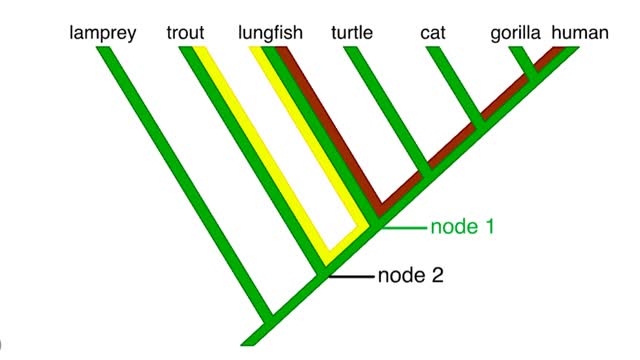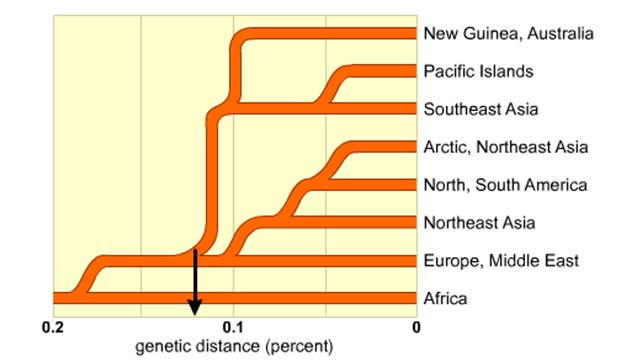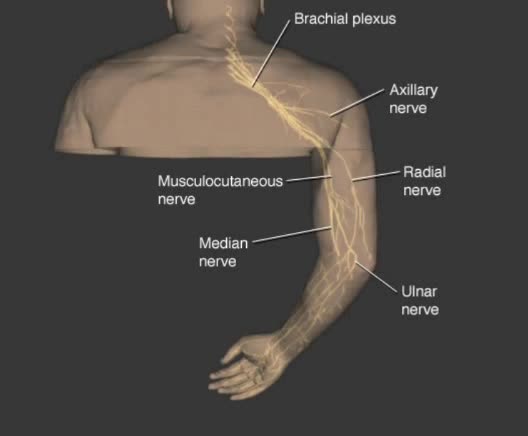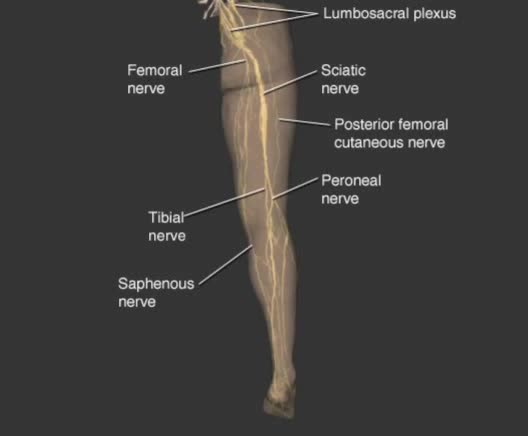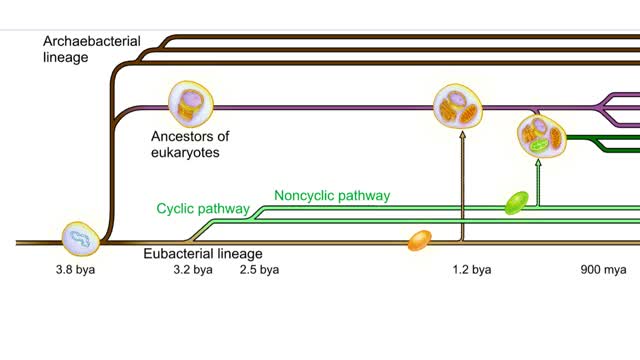Search Results
Results for: 'heme groups'
Interpreting a cladogram Animation
By: HWC, Views: 5389
Using a cladogram to determine relative relatedness and whether the lungfish is more closely related to a human or to a trout. To determine the relative relatedness, we begin by tracing the branches from the human and the lungfish to the point where they meet. We'll call this node 1. Now...
Genetic distance between human groups
By: HWC, Views: 8575
One proposed family tree for modern humans. This family tree is based on nucleic-add hybridization studies of many genes and immuno-logical comparisons. Branch points show presumed genetic divergences. This data indicates that the greatest genetic distance separates humans native to Afri...
Protein Secondary and Tertiary Structures - Animation
By: HWC, Views: 7883
Amino acid sequence dictates a protein's final shape. The presence of certain amino acids favors a pattern of hydrogen bonding that causes part of the polypeptide chain to coil and twist into an alpha helix. The presence of other amino acids enables hydrogen bonding between strand like r...
By: Administrator, Views: 447
Used to describe neuronal processes conducting impulses from one location to another. Nerve fibers: - Nerve fibers of the PNS are wrapped by protective membranes called sheaths. - Myelinated fibers have an inner sheath of myelin, a thick fatty substance, and an outer sheath or neurilemma compo...
By: Administrator, Views: 426
Used to describe neuronal processes conducting impulses from one location to another. Nerve fibers: - Nerve fibers of the PNS are wrapped by protective membranes called sheaths. - Myelinated fibers have an inner sheath of myelin, a thick fatty substance, and an outer sheath or neurilemma compo...
Secondary and tertiary levels of protein structure Animation
By: HWC, Views: 5615
Amino acid sequence dictates a protein's final shape. The presence of certain amino acids favors a pattern of hydrogen bonding that causes part of the polypeptide chain to coil and twist into an alpha helix. The presence of other amino acids enables hydrogen bonding between strand like re...
Cellular Respiration & Glucose Mobilization (Glucose transport & Phosphorylation of Glucose)
By: HWC, Views: 11436
Glucose is completely broken down into CO2 and H2O during the process of cellular respiration, which includes 3 stages: 1) glycolysis; 2) the Krebs Cycle; and 3) the electron transport chain. Glucose enters this energy yielding pathway of cellular respiration in the first stage known as...
Calvin cycle (The light-independent reactions )
By: HWC, Views: 11533
The light-independent reactions of photosynthesis occur in the stroma of the chloroplast. Carbon dioxide enters the leaf through tiny pores or stomata and diffuses into the chloroplast. The first stage of the Calvin cycle is the attachment of a carbon dioxide molecule to a 5-carbon ribulose bi...
Evolutionary tree of life Animation
By: HWC, Views: 5456
An evolutionary tree of life that reflects mainstream thinking about the connections among major lineages (bya = billions of years ago, mya = millions of years ago). By about 3.8 billion years ago, chemical and molecular evolution had produced the first living cells. The first major divergenc...
Advertisement



